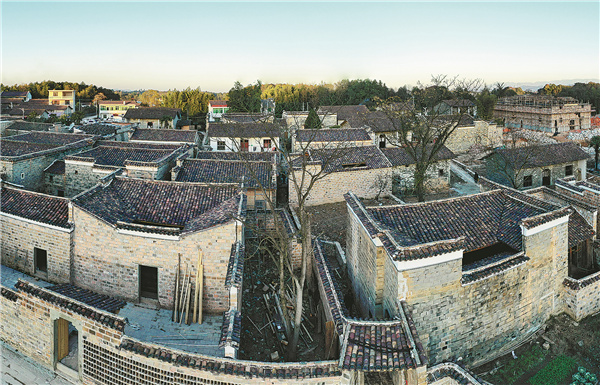

Quan Zhengang, 76, is limping his way in the rain through the long alley in Quanfang village, Jinxi county, Fuzhou city in East China's Jiangxi province.
The man, who always steps heavily with his right foot first and then follows the move quickly with the left, is a local cultural relic preservation volunteer in the village.
During Quan's 16 years of volunteer endeavor since he retired in 2006, he has hobbled across every narrow flagstone walkway to check out the current situation of each ancient building in the village.
Jinxi county still preserves more than 100 ancient villages dating to the Ming and Qing dynasties (1368-1911), which has won the county renown as an "ancient village museum without bounding walls".
The ancient dwellings in Jinxi share the typical traditional architectural design style of Jiangxi, as square courtyards were built next to each other while facilities like ancestral halls, academies and government offices were scattered between courtyards. Residents with the same surname used to live together in such residences, and many villages still keep the old and thick walls as their boundaries.
However, the compact layout may also significantly limit the space expansion demand brought by the growing population. Moreover, due to the crunch of builders with traditional wood-framed construction techniques, more residents began to choose to have their modern-style houses outside the ancient villages.
As dwellers decreased, the old buildings fell into decline. Some even became ruins.
Quan, who retired from a local agricultural service and technology center in 2006, decided to reach out with a helping hand.
He immediately signed up to participate in the county's ancient village preservation work, writing a long letter on the value and the current situation of Quanfang's old buildings.
In 2010, Quan established an ancient village protection council with other warmhearted villagers like himself.
The council members, all in their 50s and 60s, have grown up in the village. During the daytime, they often visit the doors of the ancient buildings to keep an eye on any damage. After sunset, they use flashlights and wooden sticks to guard the buildings against thieves.
Quan is not alone in this fight to save the county filled with nostalgia and ancient glory.
At present, there are 72 cultural relic preservation volunteers in Jinxi.
"The volunteers have flesh-and-blood links with the villages and are a key force in protecting cultural relics at the grassroots level," says Wu Quanhui, director of the county's cultural relics research and protection center, adding that the protection work cannot be done without the joint efforts made by the government and society, as well as residents.
In July, the National Cultural Heritage Administration issued a document that encourages and supports the participation of social forces in protecting and utilizing cultural relics buildings.
With more people from all walks of life joining the protection efforts, Quan's workload has become much lighter. But he has refused the invitation from his children who hope to take Quan to live with them in South China's metropolis of Guangzhou.
"I prefer to chat with locals in our dialect and enjoy the rice fields that undulate in the wind," says Quan.